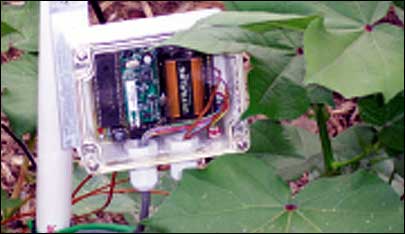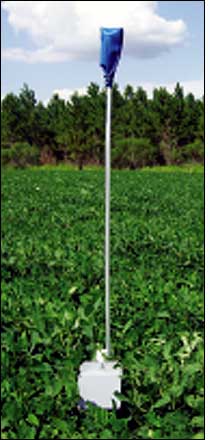Knowing the condition of the soil in real time can help improve crop yields-for all crops, not just cotton-by enabling the farmer to water only the parts of the field that need it. It also can improve the farmers’ financial yield, because they can save on water bills. George Vellidis, an engineer with the University of Georgia College of Agricultural and Environmental Sciences, says an active RFID system equipped with sensors can help farmers do this cost-effectively.
The current commercial systems for scheduling when crops should be watered don’t use RFID. Farmers embed temperature and moisture sensors in the soil in different parts of a field, and they either have to check them manually or network them wirelessly. Each wireless sensor node can cost as much as $700, making the system too expensive for most farmers.
Vellidis and Mike Tucker, a research engineer, developed a wireless temperature and moisture sensor that costs about $70. The device has a watertight circuit board about the size of a playing card with a microcontroller, an analog-to-digital converter and the supporting circuitry needed to read the sensors. Firmware loaded onto the microcontroller formats the sensor data and writes it to an active RFID tag made by WhereNet, for transmission to an interrogator. The sensor connects to the tag via a 10- or 12-pin connector and uses a 9-volt battery, which can power it for one season.
The system divides a field into irrigation management zones. “We install two, three or four nodes per zone, depending on the size of the zone,” he says. “Soil water tension values reported by the sensors in each zone are averaged and used to determine whether a zone needs irrigation.”
Vellidis says his system would cost about $2,700 for an 80-acre field, versus more than $17,000 for a system using the existing technology. Some companies are interested in commercializing the system but aren’t sure there is enough interest from farmers to make it worthwhile. Vellidis is convinced that there is.
“The market potential is quite large,” Vellidis says. “There are more than 100,000 center-pivot irrigation systems in the United States. Competition between urban and agricultural users for available water is increasing constantly, and agricultural users are being squeezed to cut down on water use. This kind of a system could help solve the problem.”



